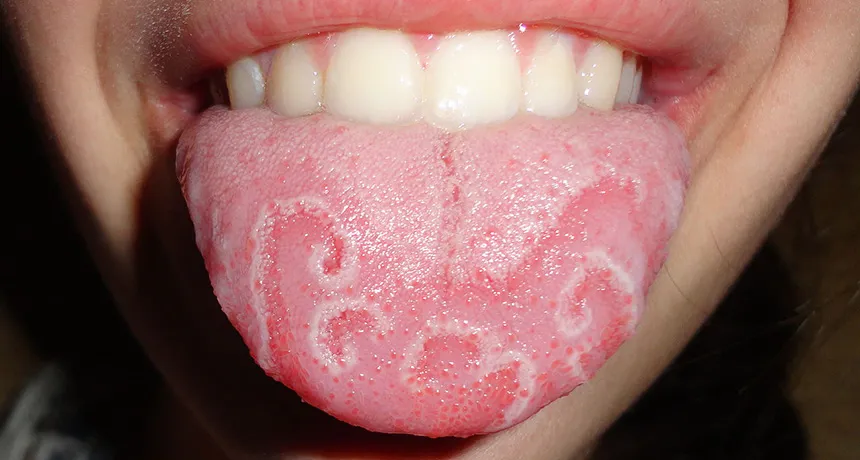
TONGUE TWISTER Cases of geographic tongue sometimes have spiral patterns (one shown). Other cases feature an archipelago of spots across the tongue.
Martanopue/Wikimedia Commons (CC BY-SA 3.0)

TONGUE TWISTER Cases of geographic tongue sometimes have spiral patterns (one shown). Other cases feature an archipelago of spots across the tongue.
Martanopue/Wikimedia Commons (CC BY-SA 3.0)